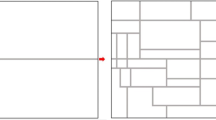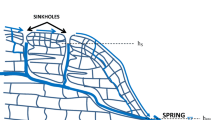Abstract.
Karstic formations function as three-dimensional (3D) hydrological basins, with both surface and subsurface flows through fissures, natural conduits, underground streams and reservoirs. The main characteristic of karstic formations is their significant 3D physical heterogeneity at all scales, from fine fissuration to large holes and conduits. This leads to dynamic and temporal variability, e.g. highly variable flow rates, due to several concurrent flow regimes with several distinct response times.
The temporal hydrologic response of karstic basins is studied here from an input/output, systems analysis viewpoint. The hydraulic behaviour of the basins is approached via the relationship between hydrometeorological inputs and outputs. These processes are represented and modeled as random, self-correlated and cross-correlated, stationary time processes. More precisely, for each site-specific case presented here, the input process is the total rainfall on the basin and the output process is the discharge rate at the outlet of the basin (karstic spring). In the absence of other data, these time processes embody all the available information concerning a given karstic basin.
In this paper, we first present a brief discussion of the physical structure of karstic systems. Then, we formulate linear and nonlinear models, i.e. functional relations between rainfall and runoff, and methods for identifying the kernel and coefficients of the functionals (deterministic vs. statistical; error minimisation vs. polynomial projection). These are based mostly on Volterra first order (linear) or second order (nonlinear) convolution. In addition, a new nonlinear threshold model is developed, based on the frequency distribution of interannual mean daily runoff. Finally, the different models and identification methods are applied to two karstic watersheds in the french Pyrénées mountains, using long sequences of rainfall and spring outflow data at two different sampling rates (daily and semi-hourly). The accuracy of nonlinear and linear rainfall-runoff models is tested at three time scales: long interannual scale (20 years of daily data), medium or seasonal scale (3 months of semi-hourly data), and short scale or “flood scale” (2 days of semi-hourly data). The model predictions are analysed in terms of global statistical accuracy and in terms of accuracy with respect to high flow events (floods).
Similar content being viewed by others
Author information
Authors and Affiliations
Rights and permissions
About this article
Cite this article
Labat, D., Ababou, R. & Mangin, A. Linear and nonlinear input/output models for karstic springflow and flood prediction at different time scales. Stochastic Environmental Research and Risk Assessment 13, 337–364 (1999). https://doi.org/10.1007/s004770050055
Issue Date:
DOI: https://doi.org/10.1007/s004770050055




